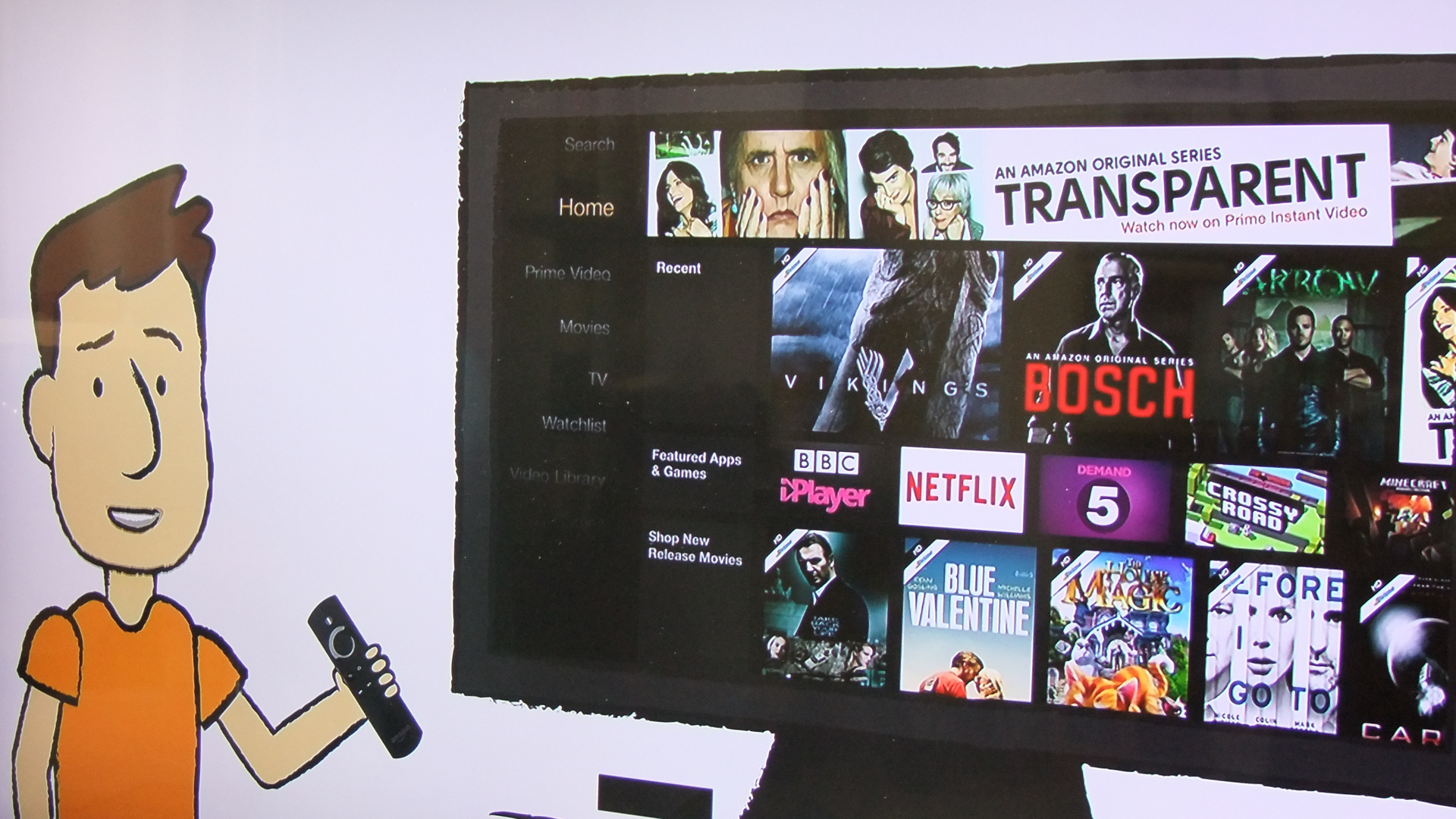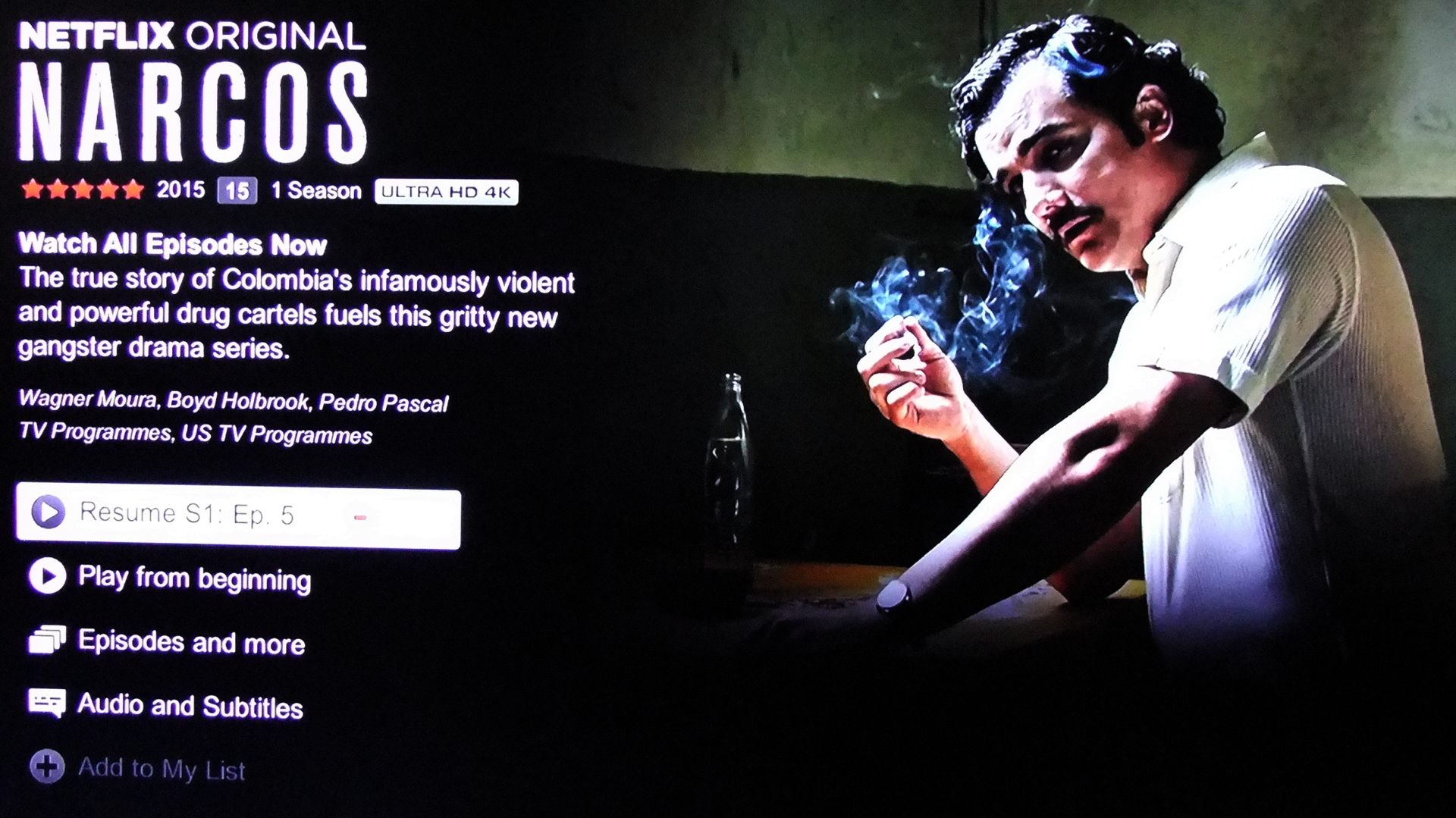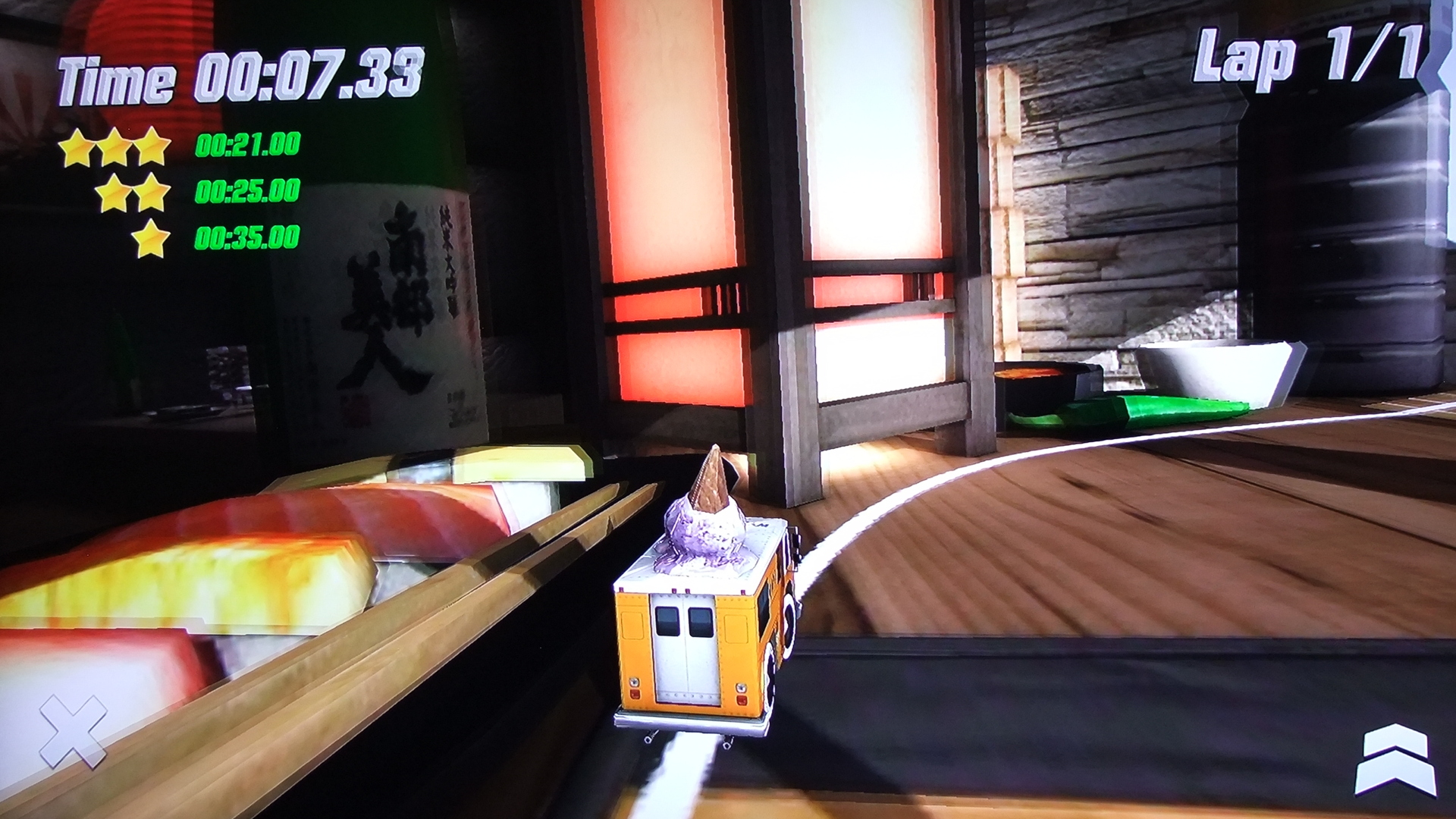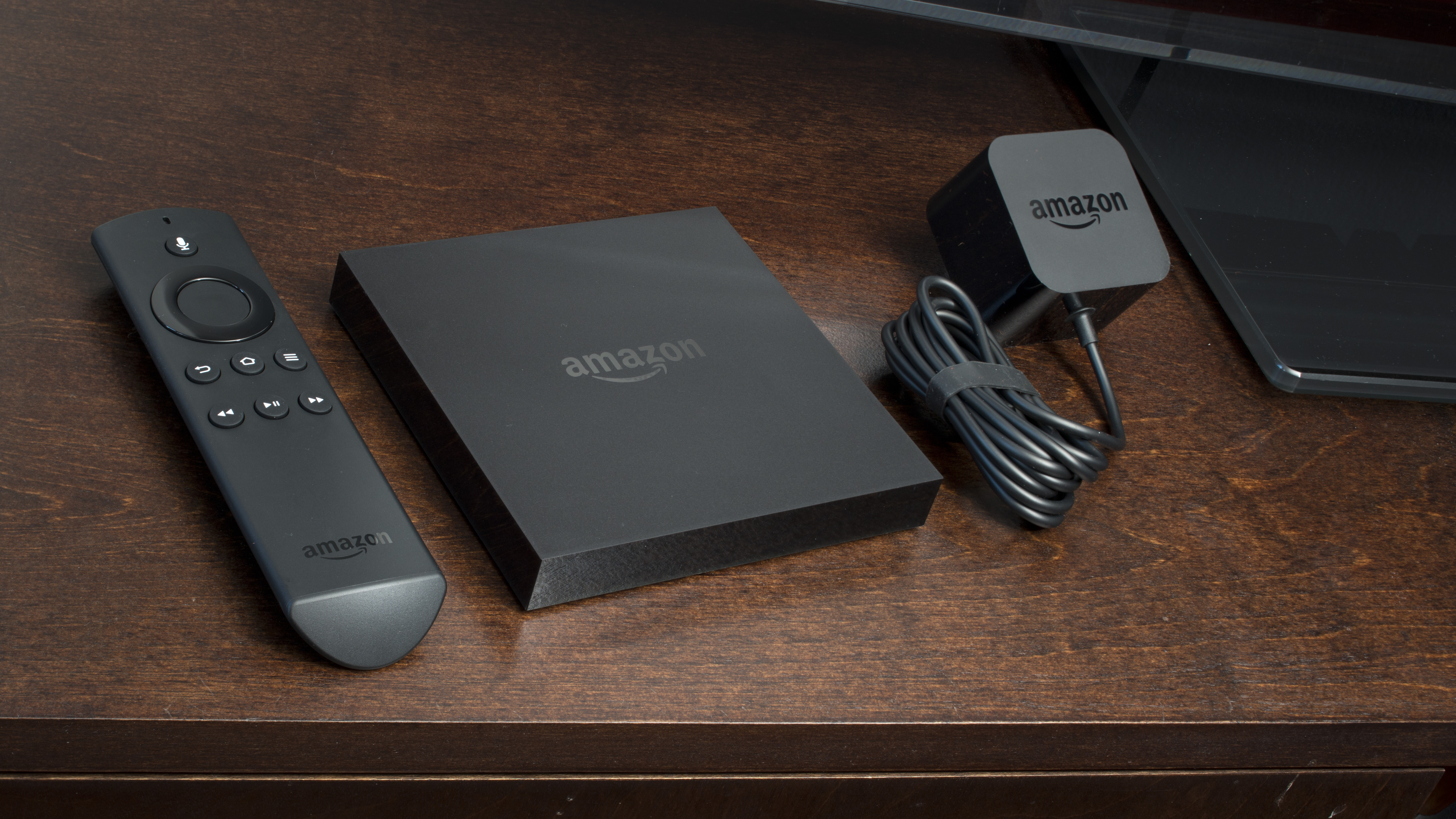Why you can trust TechRadar
The new Amazon Fire TV is an impressive little media box, and it backs up the sleek aesthetic with a slick user experience, whether you're a first-time user or an experienced techie.
The opening cartoon tutorial is smart, accessible and well-judged. It's about the right length and gives you a jargon-free rundown of the Fire TV's key features, and it's a very welcome sight the first time you boot it up.

It's something we'd like to see on more consumer devices – a box like the powerful SHIELD should really offer something more than simply dumping the first-time user into the Android TV screen without a word of advice.
The FireOS home screen is clean, simple and easily viewed from the distance of sofa-to-screen, with large images and a black background.
It's also impressively responsive with that Wi-Fi remote, although if you're flicking through your options quickly the 30Hz limit really does come into play on a 4K connection. It's not that movement becomes jerky, but it is noticeably non-smooth.
Media playback
Where that 30Hz speed limit isn't a huge issue, though, is in actual 4K Ultra HD playback. The new Amazon Fire TV has full access to the UHD content from both Amazon Prime and Netflix, as well as enabling you to rent or buy extra Amazon 4K content that isn't available on its Instant Video service.
Netflix was typically smooth and quick to get going on my (admittedly speedy) home connection. In general the same was true of the Amazon Prime video experience too, with the likes of Orphan Black showing ne'er a stutter.

I did have a slight issue with UHD Red Oaks though, where playback again felt 'non-smooth'. It wasn't jerky, or stuttering, but in motion shots especially it didn't feel particularly smooth in terms of frame rate.
I also experienced some audio de-sync issues thanks to my TV's audio running through a separate amplifier – curse those slim bezels and their rubbish speakers. On the SHIELD I was able to fix this in the system settings, but I couldn't find an equivalent setting within FireOS.
The Fire TV's high-efficiency video codec (HEVC) isn't just there to make with the 4K loveliness; it also has an impact on your 1080p playback. If the video is compatible then it halves the amount of data it needs to transmit over your network connection – if you're still on a limited connection that will be a god-send.
It also means Full HD content will start quicker, and run smoother, on slower network connections.
I did, however, experience a few codec fails when trying to play back some of the 4K demo media we use to test out Ultra HD TVs and accessories. Even with usually reliable VLC installed from the app store I struggled with some video content.
The most oft-used codecs are available, but you could find that some of your existing media library won't play back through either the Plex or VLC apps.

There are also a few additions to Amazon Fire TV's app library that are worth pointing out, most notably the new-and-improved Twitter app that will allow for live-stream sports and news content.
Gaming
Another string to the new Amazon Fire TV's bow is its gaming performance.
For an additional £35 you can buy a dedicated Fire Controller that will give you an Xbox-a-like pad with which to play the suite of games on offer to the Fire TV, although many of the titles on offer will still work with the standard remote's buttons.
Given the mostly casual nature of the Fire TV's game catalogue that's probably going to be enough, but there are some more serious games on offer, such as Telltale's Walking Dead and Game of Thrones.
It's never going to replace your PC, PS4 or Xbox One, but the level of 3D gaming performance the new Amazon Fire TV is able to offer is rather impressive.
